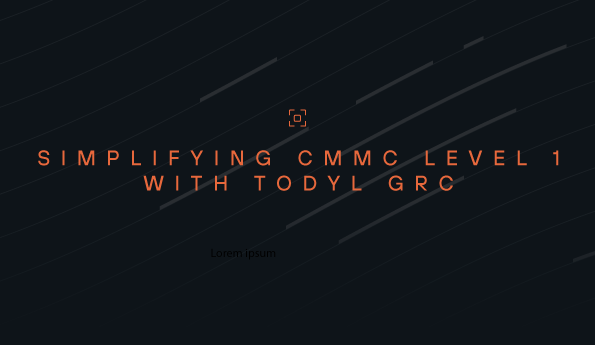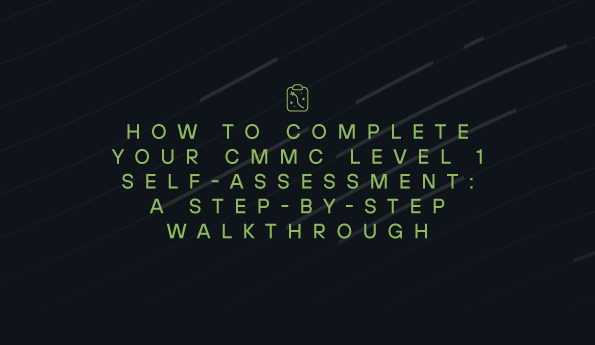MSP Zero-Day Response Plan: When Security Tools Can't Help You
This is Part 6 of our 6-part series detailing our State of MSP Security Maturity Report 2025 and the strategies MSPs can use to break through the plateau.
The alert comes in at 2:47 AM: "Critical zero-day vulnerability affecting core infrastructure components." Your security tools start lighting up with warnings. Vendor patches won't be available for hours, maybe days. Your clients are asking what you're doing to protect them. The news cycle is already spinning up the fear machine.
And you're paralyzed.
Not because you lack security tools—you have plenty. Not because you haven't invested in monitoring—your dashboards are comprehensive. You're paralyzed because there's a dangerous gap between having security technology and knowing how to respond when that technology can't help you.
When zero-days hit, tools become spectators. Process becomes everything.
The Tool Dependency Trap
The cybersecurity industry has created a dangerous illusion: that better tools equal better security outcomes. Vendors promise comprehensive protection, AI-powered detection, and automated response capabilities. MSPs invest heavily, then assume they're prepared for anything.
But zero-day events expose the fundamental limitation of tool-centric security approaches. Zero-day vulnerabilities exploit unknown weaknesses that existing tools sometimes can't detect or prevent. Too many MSPs have developed tool dependency—the belief that their security stack will handle whatever comes their way. This creates passivity when proactive response is critical.
The Process-First Reality
When zero-day vulnerabilities emerge, the MSPs who respond most effectively aren't necessarily those with the most sophisticated tools—they're the ones with the most practiced processes.
The Cool Head Advantage
Effective zero-day response starts with emotional regulation, not technical analysis. Crisis situations generate stress, urgency, and pressure that can lead to poor decision-making if not managed properly.
The first step in any major incident response is taking a breath and following established procedures rather than reacting emotionally to the situation. This isn't about being slow when speed matters—it's about avoiding panic-driven mistakes that often make incidents worse.
The Systematic Assessment Framework
When facing potential zero-day exposure, follow a systematic assessment process rather than jumping immediately to protective measures:
Environmental Discovery:
- Inventory affected systems and understand exposure scope
- Assess data sensitivity and business criticality of impacted assets
- Identify dependencies and cascading impact potential
- Determine isolation capabilities for affected systems if needed
Risk Analysis:
- Evaluate actual versus theoretical risk based on environmental factors
- Consider attack feasibility given current network architecture and access controls
- Assess business impact of various response options
- Prioritize response efforts based on risk and business criticality
Response Planning:
- Develop multiple response scenarios with different risk tolerances
- Prepare communication strategies for different stakeholder groups
- Establish decision criteria for escalating or de-escalating measures
- Document actions taken for post-incident analysis
This systematic approach prevents the rushed decision-making that characterizes ineffective incident response.
The Tabletop Exercise Advantage
Here's a stark reality: most MSPs practice their security tools regularly but never practice their crisis response procedures. This creates a dangerous gap between technical capability and operational execution.
Only about one-third of MSPs conduct regular tabletop exercises, yet these simulations build the muscle memory that separates effective crisis response from chaotic firefighting.
The Muscle Memory Benefit
Effective incident response requires coordination activities that must become automatic under stress. Teams need to execute complex workflows while under time pressure and client scrutiny. This requires pre-established procedures that have been practiced sufficiently to become instinctive.
Tabletop exercises build this muscle memory by simulating crisis conditions and allowing teams to practice coordination in low-stakes environments. Teams that have practiced perform dramatically better during actual incidents than those encountering coordination challenges for the first time during real crises.
The Pressure Testing Value
The most valuable tabletop exercises don't just walk through standard procedures—they introduce complications that test team adaptability:
- Multiple simultaneous incidents that stress resource allocation
- Communication failures that test backup coordination methods
- Vendor unavailability that forces independent decision-making
- Media pressure that tests external communication management
- Legal complications that add regulatory dimensions to technical response
These pressure-testing elements reveal weaknesses that standard procedure reviews miss.
The Business Continuity Integration
Zero-day response isn't just a technical security function—it's a business continuity capability that requires integration with broader organizational resilience planning.
The Client Communication Strategy
When zero-day vulnerabilities emerge, clients need proactive communication about their risk exposure and protective measures being implemented. Effective communication reduces client anxiety while demonstrating professional crisis management.
Many MSPs struggle with this communication because they haven't prepared templated responses for different incident types and severity levels. During high-stress incidents, creating clear client communication from scratch often results in delayed, incomplete, or confusing messages.
More mature MSPs develop pre-written communication templates for different scenarios, allowing rapid deployment of clear, professional updates during actual events.
The Stakeholder Coordination Framework
Major incidents require coordination with multiple stakeholder groups who have different information needs:
Internal Teams:
- Technical analysts need detailed threat information and environmental data
- Account managers need client impact summaries and communication guidance
- Executive leadership needs business impact assessments and resource updates
External Partners:
- Clients need risk assessments and protective measure updates
- Vendors need technical information and support coordination
- Regulatory bodies may need incident notifications and compliance reports
Effective coordination requires pre-established communication protocols that define who needs what information, when they need it, and how it will be delivered.
The Proactive Response Philosophy
The highest-maturity MSPs don't just respond to zero-day announcements—they proactively hunt for potential exposure and implement preventive measures before specific threats emerge.
The Threat Hunting Mindset
Rather than waiting for zero-day announcements, proactive MSPs continuously assess client environments for potential vulnerabilities and attack vectors. This approach identifies and mitigates exposures before they become active threats.
Threat hunting requires different capabilities than reactive incident response:
- Environmental baseline understanding to identify anomalies
- Attack pattern knowledge to anticipate potential exploit methods
- Preventive hardening expertise to reduce attack surface
- Continuous monitoring interpretation for early compromise indicators
The Environmental Hardening Strategy
The best zero-day response is preventing zero-day impact through proactive environmental hardening and attack surface reduction. MSPs who focus on continuous security posture improvement create environments that are inherently more resilient to novel threats.
Environmental hardening includes:
- Access control optimization to limit potential lateral movement
- Network segmentation to contain potential compromises
- Privilege minimization to reduce credential compromise impact
- Monitoring enhancement to increase detection capabilities
- Backup and recovery optimization for rapid restoration
The Learning and Adaptation Culture
The most effective incident response programs treat every incident, including false alarms and minor events, as learning opportunities that improve future response capabilities.
The Post-Incident Analysis Framework
Every incident response effort should conclude with systematic analysis:
What Worked Well:
- Effective procedures that should be maintained and expanded
- Successful coordination demonstrating good communication
- Tool capabilities that provided valuable data or automation
- Decision-making processes that led to positive outcomes
What Could Be Improved:
- Process gaps that created confusion or delays
- Communication breakdowns that hindered coordination
- Tool limitations that prevented effective response
- Knowledge gaps that required external assistance
Action Items for Improvement:
- Process updates to address identified gaps
- Training requirements to build lacking capabilities
- Tool enhancements for better data or automation
- Communication improvements for stakeholder coordination
The Continuous Improvement Mindset
Incident response capabilities require continuous development rather than periodic updates. The threat landscape evolves constantly, introducing new attack methods and response challenges.
MSPs with mature incident response treat security as an ongoing discipline rather than a static set of procedures and tools. They continuously refine processes based on new threat intelligence, incident lessons, and changes in client environments.
The Competitive Differentiation Opportunity
MSPs with superior incident response capabilities gain significant competitive advantages that extend far beyond security service delivery.
The Crisis Leadership Premium
Clients pay premium prices for MSPs who demonstrate professional crisis management. During high-stress incidents, MSPs who remain calm, communicate clearly, and execute effective procedures build tremendous client confidence and loyalty.
This crisis leadership capability often opens doors to broader strategic relationships beyond security services. Clients who trust their MSP's incident response often expand engagements to other critical business functions requiring similar reliability.
The Proactive Partnership Advantage
MSPs who move beyond reactive incident response to proactive threat hunting and environmental hardening transform client relationships from vendor-customer transactions to strategic security partnerships.
Proactive security management provides continuous value delivery rather than just incident response when problems occur. This ongoing value justifies premium pricing and creates stronger retention through demonstrated business impact.
The Preparedness Advantage
The next zero-day vulnerability announcement is inevitable. The question isn't whether it will happen—it's whether you'll be prepared to respond effectively when it does.
MSPs who have invested in process-driven incident response capabilities will demonstrate professional crisis management that builds client confidence and competitive advantage. Those who remain dependent on tools and reactive approaches will struggle with confusion, delayed response, and client dissatisfaction during critical moments when reputation and relationships are most at stake.
Your Preparedness Checklist
Process Development:
- Document systematic assessment procedures for major incidents
- Create communication templates for different stakeholder groups
- Establish decision criteria for response escalation and de-escalation
- Develop coordination protocols for internal and external stakeholders
Training and Practice:
- Conduct quarterly tabletop exercises with pressure-testing elements
- Cross-train team members on different response functions
- Practice client communication under simulated crisis conditions
- Test backup procedures for communication failures and resource constraints
Proactive Capabilities:
- Implement continuous threat hunting and environmental assessment
- Establish baseline security postures for all client environments
- Create proactive hardening programs that reduce attack surface
- Develop relationships with external resources for crisis support
The Excellence Opportunity
Security excellence isn't about having the best tools—it's about having the best-prepared people following the most-practiced processes. When zero-days hit, this preparation becomes the difference between confident leadership and paralyzed uncertainty.
The MSPs breaking through the security maturity plateau understand this fundamental truth. They've invested in process-driven incident response that transforms crisis management from reactive scrambling to professional execution.
This represents the culmination of our 6-part series: moving from reactive security theater to proactive business enablement requires operational excellence, comprehensive monitoring, strategic partnerships, business-aligned metrics, and crisis response capabilities working together as an integrated security program.
The opportunity is clear. MSPs who implement these capabilities systematically will capture market share, command premium pricing, and build more valuable businesses. Those who continue with reactive approaches will struggle with unsustainable costs, operational complexity, and client dissatisfaction.
The breakthrough MSPs have made their choice. The question is: have you?
Ready to see where you stand? Our Security Maturity Assessment identifies your biggest improvement opportunities and shows you which changes will deliver the fastest results.
See Todyl in Action
Learn how you can protect what you built.
Stay on the Cutting Edge of Security
Subscribe to our newsletter to get our latest insights.



